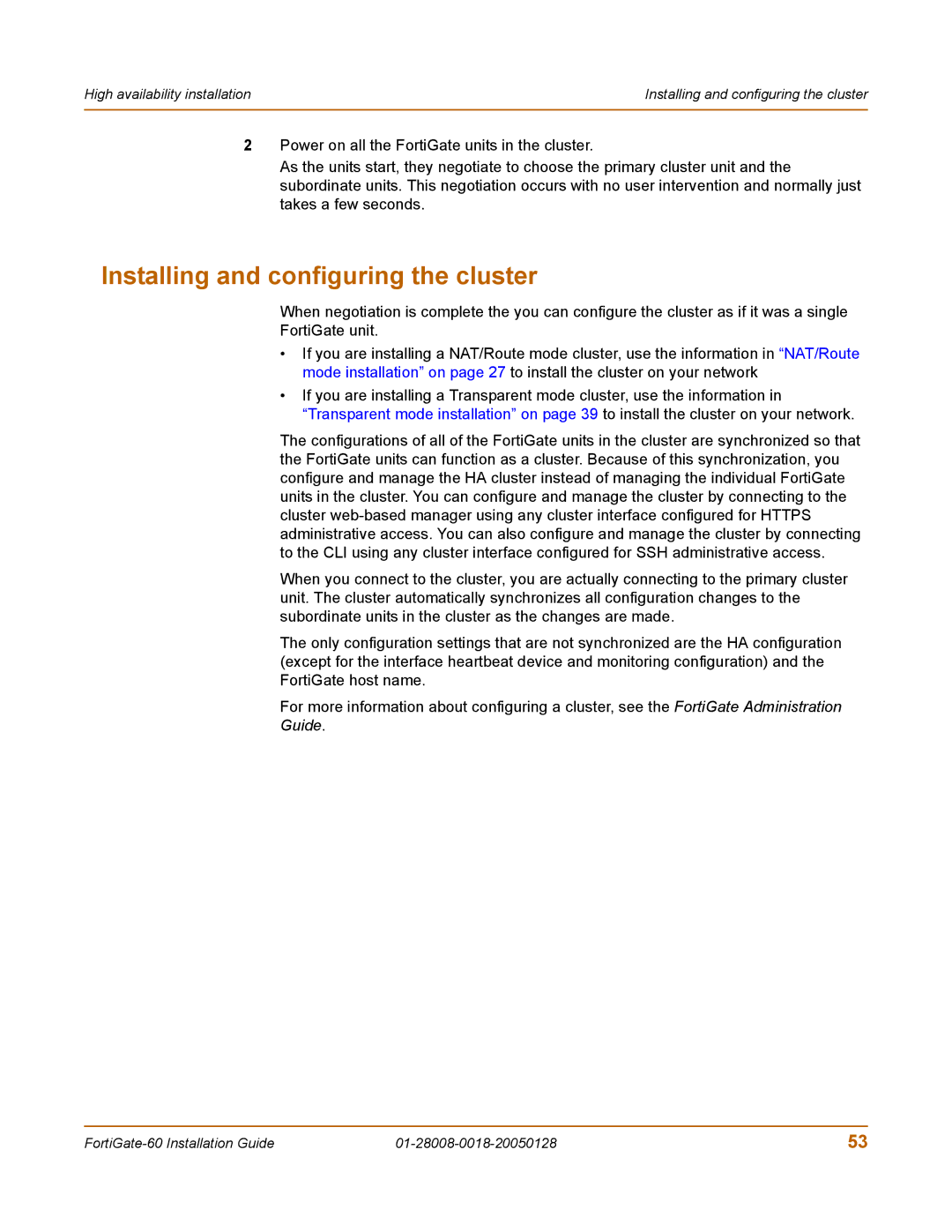High availability installation | Installing and configuring the cluster |
|
|
2Power on all the FortiGate units in the cluster.
As the units start, they negotiate to choose the primary cluster unit and the subordinate units. This negotiation occurs with no user intervention and normally just takes a few seconds.
Installing and configuring the cluster
When negotiation is complete the you can configure the cluster as if it was a single
FortiGate unit.
•If you are installing a NAT/Route mode cluster, use the information in “NAT/Route mode installation” on page 27 to install the cluster on your network
•If you are installing a Transparent mode cluster, use the information in “Transparent mode installation” on page 39 to install the cluster on your network.
The configurations of all of the FortiGate units in the cluster are synchronized so that the FortiGate units can function as a cluster. Because of this synchronization, you configure and manage the HA cluster instead of managing the individual FortiGate units in the cluster. You can configure and manage the cluster by connecting to the cluster
When you connect to the cluster, you are actually connecting to the primary cluster unit. The cluster automatically synchronizes all configuration changes to the subordinate units in the cluster as the changes are made.
The only configuration settings that are not synchronized are the HA configuration (except for the interface heartbeat device and monitoring configuration) and the FortiGate host name.
For more information about configuring a cluster, see the FortiGate Administration Guide.
53 |
